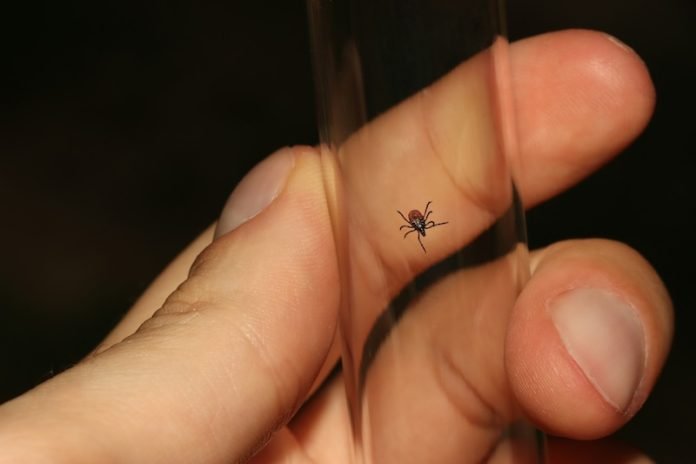
As spring unfolds and nature lovers step outside to enjoy the warmer weather, they’re not alone. The black-legged ticks, notorious carriers of Lyme disease, are also becoming more active.
But there’s good news from the world of science that might help keep these unwelcome companions at bay. Researchers from Simon Fraser University (SFU) have discovered a novel way to protect people from ticks using ant pheromones.
Claire Gooding, a lead researcher from the SFU Gries Lab, points out that ticks are most active in places and seasons beloved by outdoor enthusiasts. Whether hiking, camping, or simply enjoying a day in nature, there’s a significant risk of encountering these pests.
Ticks are not only a nuisance but also a health hazard, given their potential to transmit diseases, with Lyme disease being among the most concerning.
The research team published their findings in Royal Society Open Science, exploring how black-legged ticks respond to their natural predators, which include ants, spiders, and beetles.
Ants, in particular, caught their attention due to their complex use of pheromones for communication. These “chemically noisy” insects can deter ticks simply with their presence or the traces they leave behind.
Interestingly, the study revealed that ticks avoid areas where ants have been, even long after the ants have moved on. This avoidance behavior led researchers to dig deeper into the world of ant pheromones.
By identifying the specific pheromones and the glands that produce them, the team collaborated with chemists to create a synthetic version of these ant signals.
This synthetic pheromone proved just as effective in repelling ticks, offering a promising new approach to tick management. The researchers have even filed a patent application for these repellent chemicals.
The hope is to bring this discovery to the public in the form of topical repellents, akin to mosquito sprays, or environmental barriers. For instance, a hiking trail could be lined with wood chips treated with the ant pheromone to create a tick-repellent zone.
With ticks’ natural ranges expanding, partly due to climate change, the need for effective repellents and management strategies is more urgent than ever.
This SFU team’s work could lead to safer, more enjoyable outdoor activities for everyone, minimizing the risk of tick-borne diseases.
The potential applications of this research are wide-ranging, from personal repellents that could be applied directly to the skin to protective measures for entire areas. Imagine a future where a hike through the woods or a picnic in the park comes with far less concern over ticks, thanks to the power of ant pheromones.
This innovation could not only enhance our enjoyment of nature but also significantly reduce the incidence of Lyme disease and other tick-borne illnesses.
The research findings can be found in Royal Society Open Science.
Copyright © 2024 Knowridge Science Report. All rights reserved.




